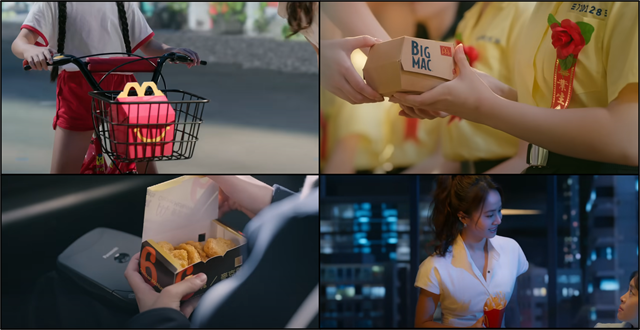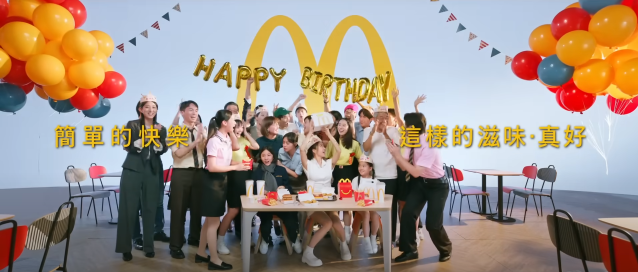What is the AIDA? How to Apply AIDA Model in Marketing? - GenApe AI
2025/07/21

This article will explain how to apply the AIDA model in an advertisement marketing strategy to encourage consumers to purchase products.
- What is the AIDA Model?
- The Step of AIDA model
- How the AIDA Model Apply in Advertisement Marketing?
- AIDA Model Utilization by Taiwanese Enterprises
- Automatic Generation of AIDA Model
What is the AIDA Model?
AIDA model is an advertising strategy that analyzes consumer psychological behavior during product purchases. Marketers take different actions at each stage to influence consumer behavior and thoughts, moving consumers from “wanting” a product to “needing” it, thereby increasing purchase desire. The AIDA model was proposed by international marketing expert Heinz M. Goldmann in 1898 and is one of the earliest marketing models in marketing. Commonly seen extensions of the AIDA model, such as AIDMA and AISAS, are all derived from the AIDA model.
The Step of AIDA model
The AIDA model divides consumer purchasing behavior into four key stages: Attention, Interest, Desire, and Action. The following details how the AIDA model guides consumers through these four stages to complete purchases.

Awareness
The first stage of the AIDA model is to attract consumer attention. This can be achieved through eye-catching headlines, images, and videos, or by creating engaging advertisements, carefully designed websites, etc., to make your brand stand out among competitors, prompting potential customers to start paying attention to your brand and products.
Interest
The second stage of the AIDA model is to generate interest in your product. At this stage, marketers can provide product or service-related information, showcasing its powerful features or service quality. They can also use case studies or customer experience sharing to make potential customers believe that your product or service can meet their needs or solve their problems.
Desire
The third stage of the AIDA model is to persuade consumers to desire your product or service. This is achieved by showcasing the product’s features and explaining advantages that other brands lack, such as product innovation, unique features, high cost-effectiveness, or stable service quality, making potential customers believe that your product and service best meet their needs compared to other brands.
Action
The fourth stage of the AIDA model is to prompt consumers to make a purchase. This can be done by explaining the simple and quick purchase process or offering time-limited discounts to urge action, guiding potential customers to think, “It would be a pity not to buy now,” thereby stimulating them to take immediate purchasing action.
How the AIDA Model Apply in Advertisement Marketing?
Many well-known corporations’ advertising campaigns conform to the AIDA framework, such as Nike’s electronic billboard promotional videos and Apple’s product introductions on their website. Through the AIDA marketing model, they can deeply analyze consumer behavior and develop corresponding marketing strategies.
These strategies not only attract consumer attention but also arouse their interest. Even McDonald’s 40th-anniversary advertisement is no exception. The following elaborates on how McDonald’s applies the AIDA model in creating its 40th-anniversary advertisement.
Attention Stage
McDonald’s 40th-anniversary advertisement begins with a street scene from 1984, accompanied by the simple phrase “McDonald’s Presents.” These techniques pique consumers’ curiosity. Why does a retro street scene appear in a 2024 advertisement? What is McDonald’s offering? To find answers to these questions, consumers continue watching the advertisement, fulfilling the first stage of the AIDA model.

Interest Stage
McDonald’s enlisted Jolin Tsai as their endorser and utilized storytelling to promote products such as Happy Meals, McNuggets, Big Macs, and fries. This aligns with the second stage of the AIDA model. Jolin Tsai, a well-known pop singer, enhances the visibility and impact of McDonald’s advertisements. Furthermore, storytelling creates vivid and engaging advertisement effects, integrating products into the narrative to resonate with consumers and arouse their interest in purchasing.

Desire Stage
The advertisement’s storyline depicts a young girl facing emotional challenges throughout her growth journey. Jolin Tsai comforts and encourages her by offering McDonald’s products. This aligns with the third stage of the AIDA model. Whether it’s learning to ride a bicycle, facing parental scolding, nervousness during a confession, or encountering work difficulties, all situations improve with McDonald’s products, indirectly demonstrating how McDonald’s can accompany consumers through life’s challenges. Additionally, the final scene of a group celebrating a birthday joyfully while enjoying McDonald’s products emphasizes the joy and happiness brought by McDonald’s, stirring consumers’ desire to purchase.

Action Stage
The advertisement concludes with McDonald’s iconic slogan “i’m lovin’ it,” aligning with the fourth stage of the AIDA marketing model. “i’m lovin’ it” expresses consumers’ love for McDonald’s products. This slogan has been used since 2003, making consumers often associate it with the deliciousness of McDonald’s products, urging them to take action and make an immediate purchase.
Easily master AIDA marketing with AI tools. Try it now and see for yourself: https://app.genape.ai/aidaFramework
AIDA Model Utilization by Taiwanese Enterprises
In addition to international brands, even Taiwanese enterprises are employing the AIDA marketing model. One notable example is GenApe, a Chinese AI-generated website developed by Taiwanese engineers. GenApe offers various AI templates for tasks such as article writing, ad generation, e-commerce product descriptions, and AI-generated graphics. GenApe effectively boosts product and service sales through its website carousel using the AIDA model. Below is an introduction to GenApe’s AIDA usage:

- Attention: Titles are phrased as questions to capture potential customers’ attention and directly address their concerns.
- Interest: Below the titles, simple descriptions outline how the product can assist potential customers, directly conveying the ability to help users easily establish brand identity.
- Desire: Phrases like “Let your brand shine” showcase how the product can provide distinctive brand copy, stirring potential customers’ desire to purchase.
- Action: Buttons are provided at the end for potential customers to click directly, enhancing the convenience of purchasing the product. The “Take Action Now” call encourages potential customers to act immediately.
Automatic Generation of AIDA Model
Before creating advertising campaigns, establishing the AIDA marketing framework is crucial. However, sometimes inspiration may be lacking. In such cases, AI tools can assist. Here, we recommend the GenApe website for automatically generating AIDA marketing frameworks. Simply input the product name and description, and GenApe will utilize AI to generate an AIDA advertising framework, producing compelling ad copy that attracts consumers to purchase your product. This achieves the most effective advertising results. Click the link below to experience the most powerful AI marketing assistant immediately.
Start Using GenApe AI Now to Enhance Productivity and Creativity!
Collaborate with AI and accelerate your workflow!
- 1.What is the AIDA Model?
- 2.The Step of AIDA model
- 3.How the AIDA Model Apply in Advertisement Marketing?
- 4.AIDA Model Utilization by Taiwanese Enterprises
- 5.Automatic Generation of AIDA Model
Categories
GenApe Teaching
User Cases
E-commerce
Copywriting
Social Media Ads
Video And Music
AI Generator
Related Articles

What is SEO? Beginner’s Guide to SEO Online Marketing
SEO Internet marketing is the mainstream today, so what exactly is SEO? GenApe is here to introduce it to you! And I will give you several SEO marketing suggestions in detail, teach you the difference between SEO online marketing and SEM marketing, and recommend you commonly used SEO tools.
Last Updated: 2025/04/07

What is On Page SEO? 15 super important on-site optimization tips
There are many factors that affect SEO rankings, and on-page SEO is one of them that has a very high weight. What is On-page SEO? Why is On Site SEO important? How to optimize On Page SEO? GenApe will answer these questions for you one by one and bring 15 important on-site optimization skills.
Last Updated: 2025/04/07

How To Do Website Optimization? 10 Tips for On-Site SEO?
By optimizing your website, you can improve its ranking in search results, attracting more traffic and potential customers. Do you want your website to be more easily found on search engines? This article will provide you with 10 tips for website optimization, addressing both content and technical aspects. Implementing these strategies will make your website stand out in search engine results. Check it out!
Last Updated: 2025/04/07

How To Write SEO Content?7 Tips for Creating Optimized Content
Do you know what SEO is? After working hard to write website articles, but found that the click-through rate of the article is very low, the exposure and traffic have not improved, and the conversion rate achieved is very low? This topic will teach you what is SEO? The difference between SEO and SEM? Take you to understand the 7 steps of article SEO search engine optimization, and teach you how to go from a marketing novice to the marketing field step by step. Let’s talk about SEO more…
Last Updated: 2025/07/21
Categories
GenApe Teaching
User Cases
E-commerce
Copywriting
Social Media Ads
Video And Music
AI Generator
AI Assistant Ayuan

Hi there! This is Ayuan speaking. I’m here to answer your questions.

How can I help you?